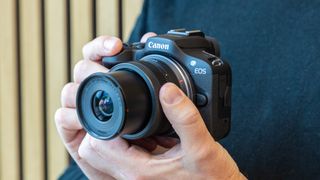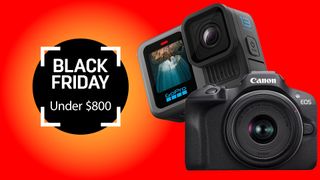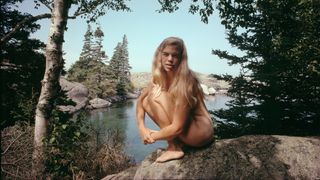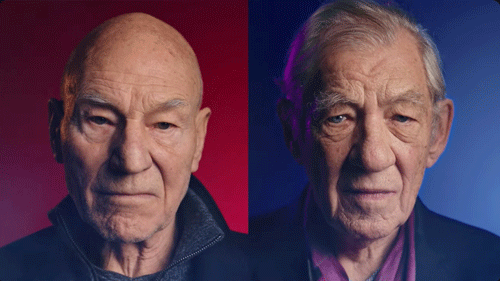The best cheap camera is the one that balances the features you need with a price you can afford. There are plenty of low-cost cameras on the market, but they won’t always give you good image quality, design, and performance at the same time. In this guide, I’ll recommend cameras that balance specs and good value – with different options for different uses.
Some of my picks like the Olympus OM-D E-M10 IV are a few years old, and originally sold for a lot more than they do in 2024. They’re cheaper because their tech is slightly dated, but they still make fantastic buys. While this guide naturally includes some of the best cameras for beginners, I haven’t just picked low-end cameras. The Canon EOS RP is a fantastic full-frame mirrorless model for enthusiasts, while the Sony A6100 is ideal for travel.
Even cheaper alternatives do exist, so check out the best cameras under $200/£200, and the best cameras under $500/£500 if you have a stricter budget . It's up to you how far you want to stretch in the pursuit of quality, but all of these cameras offer a lot for your money and help push your creative skills further.

Lauren is a writer, reviewer, and photographer who has spent ten years playing with affordable cameras. As the former Managing Editor of Digital Camera World and Deputy Editor of our sister publication, Digital Camera Magazine, she knows exactly what makes a cheap camera good – beyond the low price tag.
The Quick List
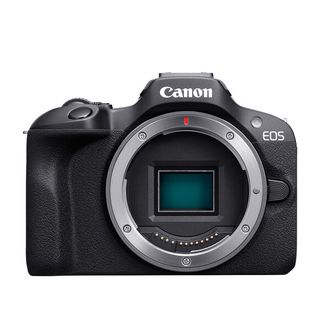
The entry-level EOS R100 is simple enough for beginners but has enough performance for seasoned users. There's no touchscreen, but it's a fantastic step up from a smartphone.
Read more below ↓
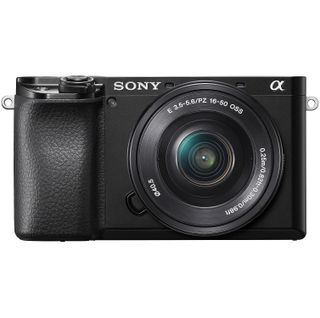
The a6100 has been around since 2019, but it's still a great pick thanks to Sony's ahead-of-the-time tech. The speedy autofocus system and a decent battery are ideal for travel photography.
Read more below ↓
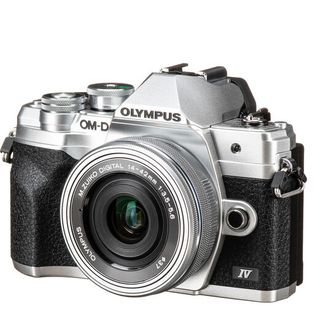
This is one of our favorite cameras for beginners, and it stands out in this budget list because of its retro design. This mirrorless is not just good value – it looks great too.
Read more below ↓

This cute compact is an alternative to your smartphone, and its 40x optical zoom gets you close to subjects while retaining quality. 4K video and a flip-forward screen can be used for vlogging.
Read more below ↓
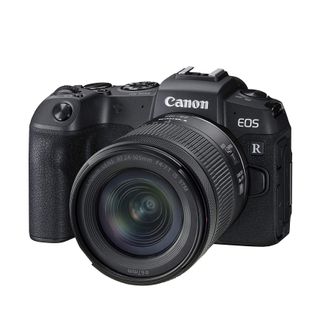
A full-frame camera gets you a big image sensor, less grain in low light, and better control when trying to get backgrounds out of focus. The EOS RP is an old model that is now more of a bargain.
Read more below ↓
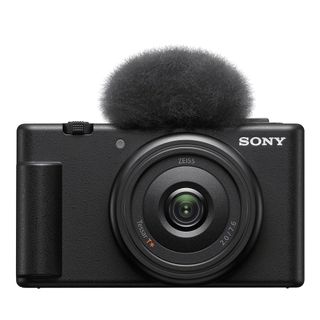
Content creators will get a lot out of the ZV-1F, including UHD 4K video footage, and a choice of adjustable or Intelligent Auto settings depending on your skill level. It's not for high-level photography, but makes a top YouTube companion.
Read more below ↓
View the full list ⇩
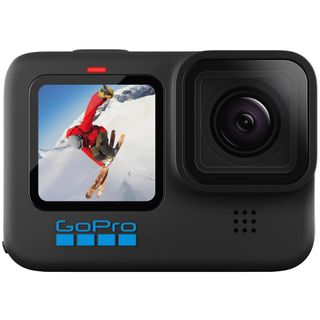
The Hero10 Black is a few years old, but I still rate it highly if you want a cheaper rugged option. You can't shoot vertical videos, but the build quality and 5K/60p shooting mode are impressive.
Read more below ↓
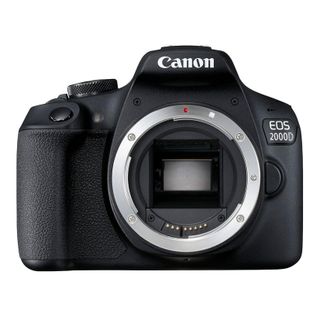
The Canon Rebel T7 (EOS 2000D in some territories) isn't a bad camera to get started with. It may be basic but it's the best low-cost DSLR for overall functionality and cheap lens choice.
Read more below ↓

Pentax calls the WG-90 adventure-proof, and for good reason. It's water, dust, shock, and freeze protected, but with a "traditional camera design" it's a great GoPro alternative.
Read more below ↓
The best cheap cameras in 2024
Why you can trust Digital Camera World
Best overall
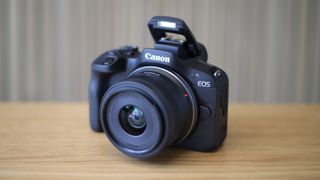
Specifications
Reasons to buy
Reasons to avoid
✅ You're stepping up from a phone: The guided interface and friendly menus help you get started if you're new to cameras.
✅ You want a family camera: With great image quality and snappy autofocus, the R100 is great for capturing family moments.
❌ You want a touchscreen: Most modern cameras have touch controls, but the EOS R100 uses a D-pad for navigation.
❌ You don't want to buy a lens: Being able to swap lenses is great for some and a pain for others. It also bumps up the initial cost.
Canon's EOS R100 is a nifty little camera, and genuinely portable at just over 350g in weight. While its size is great for popping in a rucksack or handbag, I have found that this limits the number of controls you can fit on the body, and you miss out on direct buttons for many frequently used features. You access most settings on the screen, and as the R100 offers such a helpful guided interface – which explains effects like shallow depth of field to beginners or those just learning the technical sides of photography - that certainly isn’t an issue.
What I like most about the R100 is its flexibility for different user levels. The 24.1MP sensor is plenty for the most demanding hobbyists, and the camera shares the same hybrid autofocus system as Canon's more advanced DSLRs. It’s fast and reliable, with Face+ Tracking with Eye Detection to help you get sharper shots when photographing the family or general action. Unfortunately, the R100’s Dual Pixel AF isn't available when you record 4K video, and the additional crop factor to 4K footage limits it further. But this is a stills camera with video extras, not a true hybrid.
The EOS R100 is the cheapest camera in the manufacturer's mirrorless lineup, but remarkably competent for its price point. During testing, Digital Camera World’s editor described it as a streamlined camera for first-timers, adding that "it packs enough punch for seasoned users to squeeze impressive performance out of it. The capabilities of the 24.1MP sensor, robust autofocus, and great lens lineup make this ideal for anyone stepping up from phone photography. Not to mention students and enthusiasts looking for a great first camera that won't break the bank.” The EOS R100 is the best cheap camera overall, with the ability to grow with your skills.
Read our full Canon EOS R100 review
Best cheap camera for travel
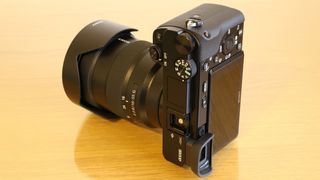
Specifications
Reasons to buy
Reasons to avoid
✅ You're a beginner: The design and features are well-suited to those picking up a proper camera for the first time. Advanced users might want more controls.
✅ You want a battery that lasts: The A6100 can last for over 400 shots without needing a recharge, which is key for traveling photographers.
❌ You're a wobbly handheld shooter: Without IBIS, you'll have less leeway on your shutter speeds and image sharpness in low light.
❌ You shoot outdoors: The camera body isn't waterproof or protected from the elements, and may get damaged if you use it in bad weather.
The Sony A6100 is getting on, released in 2019 as an upgrade to the bestselling A6000. So how does it fare in 2024? Pretty well, when you consider its superb tracking autofocus, 11fps maximum burst speed, 4K video at 30fps, and the easy-to-use menus and well-labeled controls. The A6100 is lacking in some areas, but these are modest for the price. There’s no in-body image stabilization, for example, and the touchscreen operates some but not all functions - you can select AF points and zoom in and out during playback, but can’t navigate the menus by tapping.
Still, the 180-degree touchscreen is ideal for selfies and vlogging, and our reviewer found many more video features to get excited about. “The A6100 boasts 4K capture with full-pixel readout and no pixel binning. Quick and slow motion movie capture is also available, and the camera gains an external microphone input socket lacking in the A6000.” Sadly, there’s no room to squeeze in a headphone socket to monitor audio levels.
We weren't bowled over by the A6100 when it first came out because it cost far more than its predecessor. However, its price has fallen to make it a much better buy. It’s a great choice for photography newbies, vloggers, and anyone wanting to jump up from a smartphone or point-and-shoot camera to get manual mode, zoom, and better image quality on a serious – and seriously portable – camera.
I’ve chosen it as the best cheap camera for travel because of its low weight, size, and exceptional battery life. You get between 380-420 shots for stills and around 125 minutes of video, which outlasts the newer EOS R100 above, so you can keep shooting for longer. There’s a lot of quality in a small package, and that package is easy to tailor with hundreds of different E-mount lenses.
Read our full Sony A6100 review
Best cheap retro camera
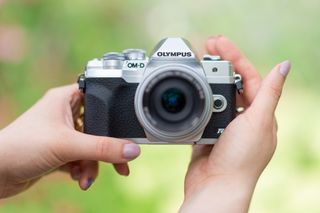
Specifications
Reasons to buy
Reasons to avoid
✅ You mostly shoot handheld: The in-body image stabilization can keep shots sharp as slow as 1/8th second.
✅ You want a wide choice of lenses: Hundreds of Micro Four Thirds format lenses are compatible with the camera.
❌ You want a full frame sensor: The Micro Four Thirds format will never deliver quite the same quality as full frame.
❌ You mainly shoot video: You don't get a USB-C or microphone port, and 4K video is capped at 30fps - but that's in line with most of the cheap cameras on this list.
The Olympus OM-D E-M10 Mark IV was affordable from launch. It's still one of my favorite cheap cameras for beginner photographers and vloggers who want something more stylish and retro-looking than the majority of all-black offerings. The Olympus OM-D E-M10 Mark III that came before was an accomplished Micro Four Thirds camera with plenty to offer, but its aging 16MP sensor and contrast AF left room for improvement.
The Mark IV is a decent update, with a 20.3-megapixel sensor, zippy 15fps burst shooting mode and a faster continuous focusing mode. Unfortunately there's no mic port to go with the camera's video capabilities, which include 4K at 30p, 25p, 24p and Full HD at 60p, and 50p.
I'm a big fan of the design, which is reminiscent of traditional film cameras and appealing to those who appreciate a vintage aesthetic. It's got modern touches too, though, with a tilting LCD, that, like the Sony A6100, is capable of flipping 180 degrees down to create the perfect selfie or vlogging monitor. And although the body is plastic rather than metal (to keep the weight down), its handling is solid, with three dials on the camera's top to change settings and modes.
Unlike some cameras on this list, the OM-D E-M10 Mark IV has 5-axis image stabilization with up to 4.5 EV steps of compensation, and our reviewer found that "even images shot in low light with a slower shutter speed still came out sharp... providing smooth footage when walking with the camera handheld." The Olympus brand is no longer around, but the OM-D E-M10 Mark IV is still high on my list of recommendations for amateur photographers.
Read our full Olympus OM-D E-M10 Mark IV review
Best cheap compact camera
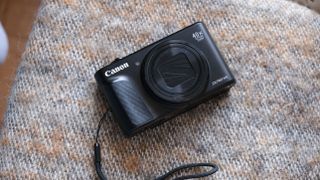
Specifications
Reasons to buy
Reasons to avoid
✅ You want a long zoom: With 40x optical power, you can get closer to subjects from much further away.
✅ You like the design of compacts: The SX740 HS isn't much bigger than a smartphone, or much better. But it offers traditional handling if you prefer physical buttons.
❌ You want RAW shots: If you want the ability to capture RAW images (which have more detail and detail), you won't find it here.
❌ You like shooting with a viewfinder: Probably due to the camera's compact sizing, there's no EVF to look through and compose your images.
Our reviewer found that the image quality offered little benefit to a high-end smartphone, but mainly praised the design, which includes a flip-up 3-inch, 922k-dot LCD (not touchscreen) and physical mode dial. “There are sizeable, grippy panels on the front and rear, and the camera feels comfortable and secure in the hand - refreshingly so if you're more accustomed to a slippery, wafer-thin smartphone.”
The PowerShot SX740 HS’s main feature is its 40x optical zoom, which is effectively 24-960mm and offers a hugely versatile shooting perspective. While shots start to get shaky at the long end of that, 5-axis optical image stabilization keeps shots sharp at the longer focal lengths.
We didn’t find the image quality to be average, but by no means terrible. Although the exposure metering was generally accurate - with some delays in automatic mode - and the camera balances well when preserving highlight and shadow detail, the dynamic range is restricted and higher contrast shots can look quite flat. Given that you can only shoot in JPG not RAW, it becomes trickier to boost images when processing as the data simply isn’t there. In low light, the small 1/2.3-inch sensor and maximum sensitivity of ISO 3200 are limitations.
So why buy the PowerShot SX740 HS? With manual, auto, and creative controls, it caters to different skill levels and is easy to use for beginners. As our reviewer adds, “if you’re looking for a versatile, long-zoom travel camera, it doesn't disappoint.”
Read our full Canon PowerShot SX740 HS review
Best cheap full frame camera
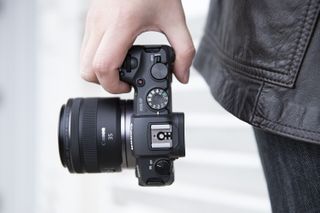
Specifications
Reasons to buy
Reasons to avoid
✅ You're already invested in Canon: If you've got a pile of EF lenses, you can still use them with the EOS RP via an adapter.
✅ You want the advantages of full-frame: Better low light performance and shallow depth of field are two of the main advantages of a full-frame sensor.
❌ You plan to use zoom lenses: The EOS RP can get a little swamped by large and longer lenses and is better suited to short primes like 35mm and 50mm.
❌ You can afford the EOS R: The RP is already the most expensive in this guide. Push your budget further for the EOS R and you'll get better autofocus and video capabilities.
The EOS RP was Canon's second full-frame mirrorless camera, released as a smaller, lighter, and cheaper alternative to the EOS R. It's designed to be a compact, affordable, and easy-to-use entry point into Canon's full-frame mirrorless system, and it succeeds brilliantly. Unfortunately, the price drop also means a drop in features, and the RP lacks IBIS for stabilizing walking shots and erratic movements, as well as images in low light.
As a long-time Canon user, I loved the EOS RP when I tested it. Its image quality, dynamic range, and handling were at the quality I’d expect for a full-frame Canon, but its size was refreshing compared to the heavier DSLRs I was used to. The camera’s small dimensions mean it can sometimes feel overbalanced by larger lenses, though. The 4K video mode also has some caveats – the image frame is cropped by a factor of 1.6 and you can't use Canon's speedy Dual Pixel CMOS AF system unless you drop the resolution to full HD.
On the upside, the pictures are clear and sharp, the vari-angle touchscreen display is a real advantage for both stills and video and with an EF lens adaptor, you can use existing Canon DSLR lenses alongside the new but growing RF lens system. Our reviewer felt that “the RP certainly isn’t going to win any awards for speed, with a burst mode of 4fps in Servo AF or 5fps in One Shot, but it will record up to 50 14-bit raw files on a UHS-II card before the camera starts to slow down, which is well above average for a camera not designed for sports photography.”
At around $1,000/£1,000, the EOS RP is the most expensive 'cheap' camera on this list, but for a full-frame model, its price is fantastic. The cheaper it gets, the more I like it.
Read our full Canon EOS RP review
Best cheap camera for YouTube
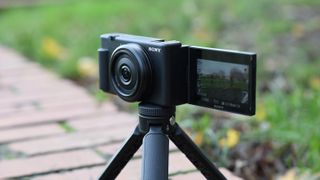
Specifications
Reasons to buy
Reasons to avoid
✅ You're a social-first shooter: If your videos go straight to TikTok, YouTube, or Instagram, the ZV-1F can send content to your phone via remote shooting.
✅ You mainly shoot indoors: The ZV-1F's microphone and stabilization work best inside, as do the face and product focus modes.
❌ You'll want to change lenses: The ZV-1F's built-in lens can't be swapped, so if you want more versatility than the fixed 20mm view this isn't for you.
❌ You want to shoot high-quality stills: Image quality was fairly average during our testing, and budding or advanced photographers will be left wanting.
If you want to step up from your smartphone camera to a dedicated vlogging device but don’t have much to spend, the Sony ZV-1F is a fantastic option. During testing, we felt it largely delivers on its promise of budget-friendly vlogging, and our reviewer particularly praised the speed and accuracy of its autofocus system for subjects – or vloggers – on the move. “It has Sony’s proven excellent eye-tracking autofocus, so your (or any) face you point the camera at will be kept firmly in focus, with that pin-sharp focus going to the nearest eye.”
When I used the Sony ZV-1F I found the 360-degree screen perfect for fun angles, the touchscreen intuitive and the menus easy to navigate. Having never tried one of Sony’s Z-line cameras before, I was shooting video and audio within minutes, and sending the clips to my phone just as quickly. Like our reviewer, being able to automatically brighten faces and smooth skin tones was effective, although not to my tastes.
Being low-cost, the ZV-1F isn’t as well-built as the ZV-E10. “The plastic is of good quality but it does feel a little cheap in the hand, and it won’t provide much protection from significant bumps or drops.” The outdoor footage we captured was also a little drab and undersaturated, and the camera’s digital stabilization led to shaky footage while walking. The stills image quality was so-so, and the lack of manual buttons might be frustrating for wannabe photographers seeking more control over their shots.
All that sounds negative, but in fact the Sony ZV-1F is a brilliant option for budget-conscious vloggers who want ease of use and mainly shoot inside. I really enjoyed using this little camera; it’s great fun to pass between friends, has a built-in microphone better than most smartphones and makes neat clips ready for social media.
Read our full Sony ZV-1F review
Best cheap action camera

Specifications
Reasons to buy
Reasons to avoid
✅ You want a beginner action cam: GoPro now markets this as an action cam for newbies, and the easy operation and welcoming price supports that.
✅ You want slow-mo videos: You can choose the level of slow-mo applied to your footage, up to Super 8x Slo-Mo at 2.7K resolution.
❌ You want high-quality footage: Footage from the GoPro is limited to the built-in wide-angle lens and this still looks squeezed rather than cinematic.
❌ You're a social shooter: The Hero 10 Black is less versatile than the 11 Black for vertical shooting formats, which has an 8:7 sensor.
The GoPro Hero 10 Black has been my favorite action camera since its release in 2021, and it holds up well against the latest Hero 12 Black despite its great value price. It can capture 5.3K resolution footage at up to 60fps, or 4K footage at 120fps, which outpaces all the cheap cameras on this list. You can grab 19.6MP stills from 5.3K video, while the standalone photo modes include standard, burst, night, SuperPhoto, and RAW Photo.
The Hero 10 Black sports a familiar cuboid GoPro design, with two LCDS; a 1.14-inch screen at the front and a main 2.27-inch touchscreen around the back. Flip-out feet on the bottom also make it easy to mount without a housing. Like all action cameras, the plastic Hero 10 Black is solid and durable, waterproof up to 33 feet (10 meters), and lightweight at just 153g. But it packs a lot of power into its tiny frame.
During testing, we found that the camera’s improved GP2 processor makes it much nipper than the Hero 9, both for touch operation and file transfers. I’ve always loved how easy it is to share footage from the camera, using a wireless transfer to my iPhone and the improved GoPro Quik app. Our reviewer also found that “you can offload footage and photos with a wired connection. This cuts the transfer times by up to half, with support for Hero 10 to USB-C or Lightning connector.”
GoPro is still the most popular action camera brand. That means there are a lot of available mods and accessories to enhance the camera's functionality – such as a floaty device, helmet mount, or dog harness – and make it a Swiss army knife for your outdoor photography. Is this the cheapest action camera on the market? No, but it offers the best value and price-to-performance ratio.
Read our full GoPro Hero 10 Black review
Best cheap DSLR
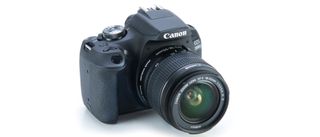
Specifications
Reasons to buy
Reasons to avoid
✅ You want an optical viewfinder: The T7 has a bright and clear pentamirror viewfinder that shows you a true representation of the scene.
✅ You value battery life: At around 500 shots from a single charge, this is one of the most durable batteries in the guide.
❌ You're into video: The T7's video features were limited upon its release, and they're even more behind in 2024.
❌ You need something compact: This DSLR is by no means heavy, but it's still bigger than many of the alternatives on this list.
The Canon Rebel T7 (the EOS 2000D in Europe and the EOS 1500D in Australasia) is more than six years old, and some of its specs look ancient compared to modern cameras. This little DSLR has a fixed rear screen, only shoots full HD video rather than 4K, and doesn't come with Canon's Dual Pixel CMOS AF for faster focusing in Live View mode.
But it’s the cheapest DSLR you can still buy today, and remains on the market for good reason. It offers a 24-megapixel sensor and gives you access to a truly vast selection of Canon EF-mount lenses for almost limitless creative options. In short, it's ideal for new photographers who want to learn how to use a 'proper' camera.
Some beginner photographers will still want a DSLR over a mirrorless camera like the EOS R100, and the T7 gives you a clear optical viewfinder instead of an electronic one. Its handling is effective too. Our reviewer found there were “enough controls for more experienced users to start experimenting with settings, without having to go searching through menus, with buttons on the back for white balance, ISO, drive mode and autofocus settings.”
Unlike the OM-D E-M10 Mark IV or Sony ZV-E1F in this list, the T7 certainly isn’t a good fit for vlogging. And its 9-point autofocus system is sluggish for moving targets. But I’ve used this camera, and its image quality is still very good for a camera at this price, especially when you pair it with a good EF lens (kit lenses with budget cameras are often poor). The T7 is a perfectly competent camera at a rock-bottom price. With fewer features, it's easier to get to grips with the basics, and this camera will still let you take control of your photography, which matters way more than extra megapixels or tilting screens.
Read our full Canon EOS Rebel T7/ EOS 2000D review
Best cheap rugged camera

9. Pentax WG-90
Specifications
Reasons to buy
Reasons to avoid
✅ You don't want an action camera: The design and handling of the WG-90 is more traditional, to suit users who find GoPros too fiddly.
✅ You shoot close-ups: Uniquely, the camera has six macro lights around the lens to help illuminate close-up subjects.
❌ You want manual control: This is a camera largely designed to be used in automatic mode, and the manual settings for exposure and autofocus are minimal.
❌ You want high-quality images: While the WG-90 is phenomenally practical, you won't get bokeh or a high level of sharpness from its small sensor.
The text on the front of the Pentax WG-90 boldly reads "adventure-proof", but this waterproof, freeze-proof, environment-proof camera is as much for outdoor photographers as people whose job requires them to document inhospitable environments. It's a camera designed to help construction workers, inspectors, divers, climbers, and other extreme users to take photos where their normal cameras fall short.
As such, the WG-90 excels in its hardy build. It can be used in temperatures down to -10°C/14°F, and underwater down to 46 feet – lower than the current GoPro range. What's particularly unique is the built-in ring light from six LEDs dotted around the camera lens, which help to brighten subjects in macro mode and minimize the amount of shake by doing so. You’ll likely need these lights even on sunnier days, though, as the lens’ maximum aperture is F3.5.
The WG-90 will definitely survive drops, spills and thrills – but its image quality matches and sometimes falls behind smartphones. The sensor size is small at 1/2.3-inch, and in low-light performance struggles to resolve shadow detail and create a clear, noise-free image – although you are limited to ISO6400 so can’t push the grain too high. There’s a handy 5x optical zoom (equivalent to 28-140mm), and this moves inside the camera to keep it protected.
In terms of handling, the WG-90 is designed for automatic operation, and has a range of scene modes to optimize the settings for you. The buttons are raised and solid, and the 2.7-inch display, which has an anti-reflective coating for better visibility outdoors. But there’s next to no manual control over exposure (no RAW files) and how the images turn out comes down to the camera. Waterproof compact cameras are somewhat stuck in a rut, but the WG-90 is good looking and bomb proof enough to be worth its price.
Comparisons and Lab Data
How to choose the best cheap camera
Finding the best cheap camera requires a bit of research, and you need to balance your budget with getting the right features. It all depends on what you need the camera for. Are you looking for a photography-first camera that gives you manual control over exposure settings and helps you learn new skills and effects? Do you want to start a YouTube channel and get a basic vlogging camera to capture videos with facial recognition? Maybe you already have a workhorse camera, but want something more portable to take on holiday?
Ask yourself what the dealbreakers are in your new cheap camera: size, the ability to change lenses, ease of use, ruggedness, or video quality. Once you’ve determined what’s most important, compare the specs of the camera types you’re interested in, narrow down your options, and then read our full reviews to be sure it’s a good fit.
What cheap cameras are good for filming?
When picking a cheap camera for filming, you'll want something that matches your aspirations. For high-quality commercial shoots, you'll need a more advanced camera than a basic vlogging camera, for example.
The Panasonic Lumix GH5 is a brilliant value camera for aspiring filmmakers who want to shoot high-quality videos with interchangeable lenses. The GoPro Hero 10 Black is perfect for capturing outdoor action footage because it's durable and compact.re are cheaper cameras for every use case.
The key thing is to prioritize the features you need. While there might be cheaper cameras out there, make sure they have the video specs and capabilities for your filmmaking projects.
What is a good cheap camera for YouTube?
The Sony ZV-1F is a great cheap YouTube camera and ideal for beginner vloggers thanks to its small size and price. I've recommended it in this guide, but any model that can record good quality video, has a wide lens suitable for vlogging (to capture both you and the background), a built-in microphone, and the ability to livestream will work for creating YouTube content.
How we test the best cheap cameras
We test cheap cameras the same way as all cameras at Digital Camera World; by combining real-world shooting scenarios and carefully controlled lab conditions. Firstly, we’ll ask an expert reviewer - on the team or a trusted freelancer - to use the camera for several weeks or even months. They’ll use all the key features, discuss the handling and design, and take sample images and video clips to analyze the camera’s performance against the manufacturer’s claims.
Next, our lab tests measure the camera’s resolution, dynamic range, and signal-to-noise ratio. Resolution is measured using ISO resolution charts, dynamic range is measured using DxO Analyzer test equipment and DxO Analyzer is also used for noise analysis across the camera's ISO range.
We use both real-world testing and lab results to inform our comments in buying guides. That means you get true-to-life experiences, and the ability to compare cheap cameras against each other before making a buying decision.
Find out more about how we test and review on Digital Camera World
